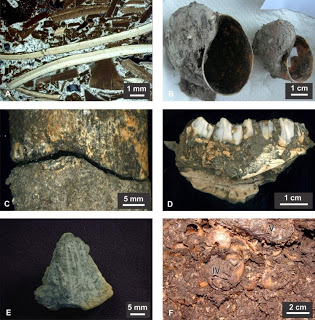
Previously unknown archeological sites in forest islands reveal human presence in the western Amazon as early as 10,000 years ago, according to research published August 28 in the open access journal PLOS ONE by Umberto Lombardo from the University of Bern, Switzerland and colleagues from other institutions.
The study focuses on a region in the Bolivian Amazon thought to be rarely occupied by pre-agricultural communities due to unfavorable environmental conditions. Hundreds of ‘forest islands’- small forested mounds of earth- are found throughout the region, their origins attributed to termites, erosion or ancient human activity. In this study, the authors report that three of these islands are shell middens, mounds of seashells left by settlers in the early Holocene period, approximately 10,400 years ago.
Samples of soil from these three mounds revealed a dense accumulation of freshwater snail shells, animal bones and charcoal forming the middens. The mounds appear to have formed in two phases: an older layer composed primarily of snail shells, and an overlying layer composed of organic matter containing pottery, bone tools and human bones. The two are separated by a thin layer rich in pieces of burnt clay and earth, and the uppermost layer of deposits was also seen to contain occasional fragments of earthenware pottery.
Radiocarbon analysis of two middens indicates that humans settled in this region during the early Holocene, approximately 10,400 years ago, and shells and other artefacts built up into mounds over an approximately 6,000 year period of human use. The sites may have been abandoned as climate shifted towards wetter conditions later. Lombardo adds, “We have discovered the oldest archaeological sites in western and southern Amazonia. These sites allow us to reconstruct 10,000 years of human-environment interactions in the Bolivian Amazon.”
Note : The above story is based on materials provided by Public Library of Science.










